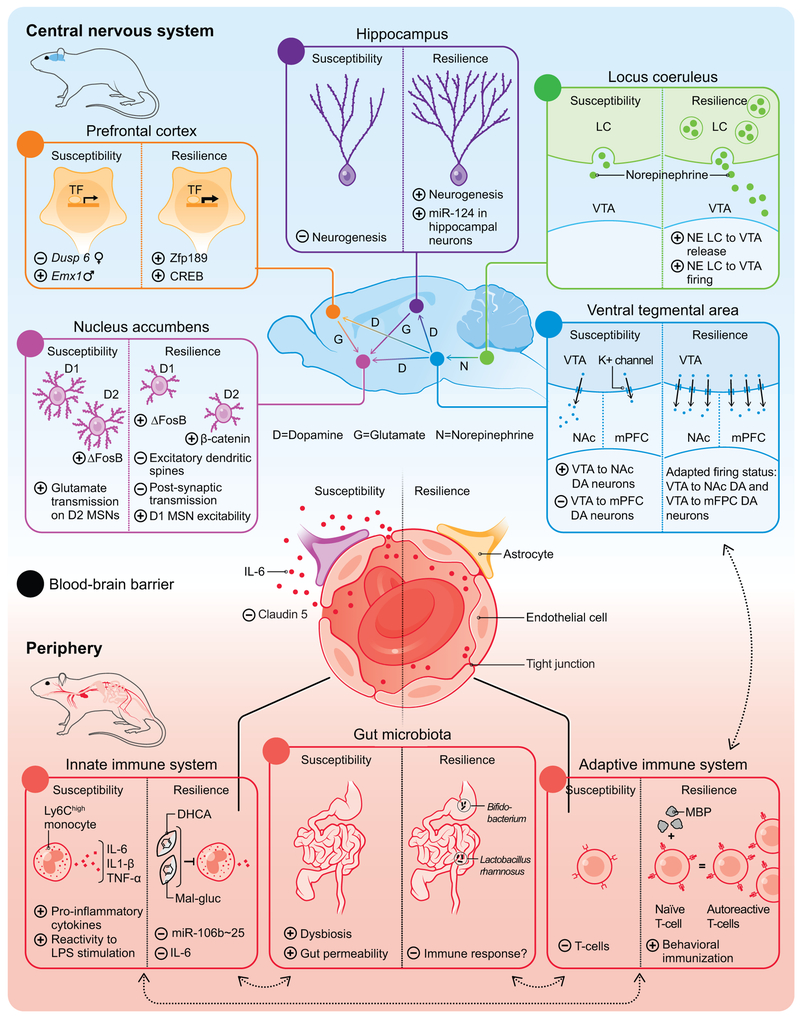Fig. 1.
Stress-resilience, the process of positive adaptation in the face of psychosocial stress, is a complex process that involves both central and peripheral mechanisms. In the central nervous system, several specific brain regions and circuits are crucial in mediating responses to stress (Fig. A-E). In the periphery, cellular and humoral factors of the immune system (Fig. G, H) and changes in gut microbiota composition (Fig. I) contribute to the development of resilience. Recently, the blood-brain barrier has been implicated as an additional factor (Fig. F). Importantly, these compartments interact extensively with each other.
Abbreviations: CREB: cAMP response element-binding protein; DA: Dopamine; DHCA: Dihydrocaffeic acid; Mal-gluc: Malvidin-3′-O-glucoside; Dusp6: Dual Specificity Phosphatase 6; Emx1: Empty spiracles homeobox; IL: Interleukin; K+: Potassium; LC: Locus coeruleus; LPS: Lipopolysaccharides; MBP: Myelin basic protein; miR: microRNA; mPFC: Medial prefrontal cortex; MSN: Medium spiny neurons; NE: Norepinephrine; NAc: Nucleus accumbens; TNF: Tumor necrosis factor: VTA: Ventral tegmental area; Zfp189: Zinc finger protein 189.

